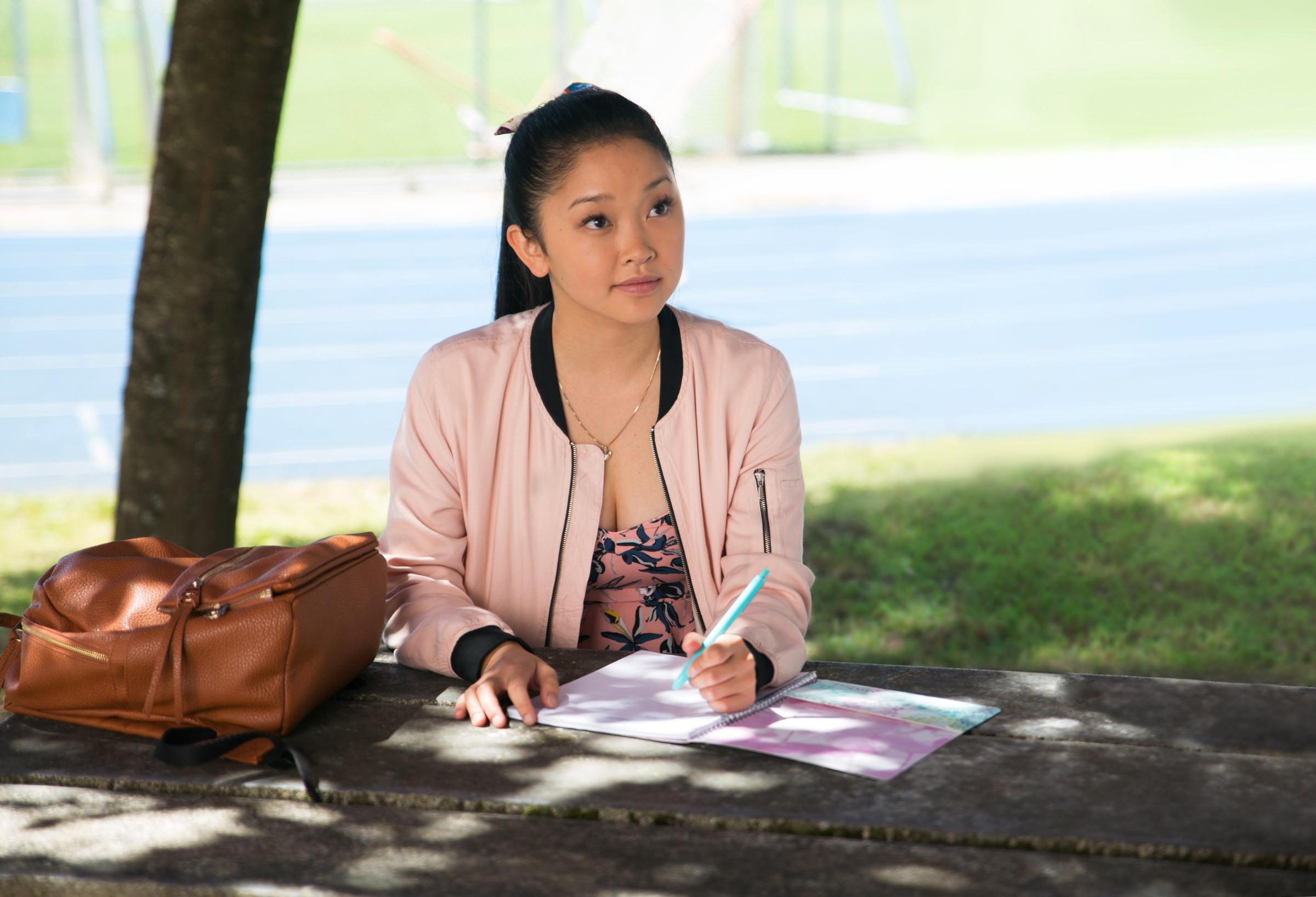
Over the last 16 years, Hollywood has certainly discussed the need for better representation onscreen. Movements like #OscarsSoWhite and #MeToo dominated red-carpet conversation and social media. And there has been some change: The Academy of Motion Picture Arts and Sciences grew and diversified its voting body in hopes of nominating a wider array of movies and performances—and the nominees and winners have in fact been more diverse in recent years.
But a new study from the University of Southern California's Annenberg Inclusion Initiative suggests that, despite the talk of progress, not much has actually changed onscreen. Stacy L. Smith, a professor of communications and head of the initiative, led a review of 1,600 top-grossing films from 2007 to 2022. The largest study of its kind, it examines a whopping 69,858 speaking roles across those movies to see whether Hollywood has generated a significant shift in representation in terms of gender, race and ethnicity, LGBTQ+ identity, or disabilities.
"It's all talk and little action," says Smith. "Many of these numbers did not move or went backwards. That shows us that the industry does not know how to change without the intervention of experts to work with them to change the systemic processes that lead to inequality and discrimination."
More From TIME
But the study did identify one major exception: In the last 16 years, the percentage of Asian characters with speaking roles onscreen skyrocketed from 3.4% to 15.9%. In that same time period, Black characters saw little change, from 13.0% to 13.4%, and the proportion of Latino characters grew from just 3.3% to just 5.2%. "My initial reaction is I'm very happy but very guilty," says Bing Chen, the CEO and Co-Founder of Gold House, an organization that champions and invests in Asian Pacific creators and companies. "We need to support all multicultural communities." But he finds the data encouraging: change is achievable across demographics.
Chen identifies three major milestones for Asian characters onscreen in the last several years. In 2018, Crazy Rich Asians, the first film by a major Hollywood studio to feature a majority Asian cast in 25 years since The Joy Luck Club premiered in 1993, became a genuine blockbuster. The next year, The Farewell and Parasite—movies partially or completely featuring non-English dialogue—performed well at the box office against their budgets and won awards. Parasite won four Oscars, including Best Picture, Best Director, Best Original Screenplay, and Best International Feature Film. "The year former President Trump was spitting all sorts of really anti-Asian xenophobic commentary, talking about 'kung flu' and all that nonsense," says Chen. "So when Parasite won, that was a really big affirming moment of, we're actually creatively excellent, even if we don't speak your language."
And last year, Everything Everywhere All at Once became a surprise box office smash and the most-awarded film of all time.
Read TIME's Cover Story: How Crazy Rich Asians Changed Hollywood
And that's just in film. On TV, shows like Fresh Off the Boat, Squid Game, and Kim's Convenience have had a major cultural impact. And cultural exports from Asian countries have gone mainstream in the U.S. "There's no question that the rise of K-Pop as a institution has directly and indirectly contributed to the acculturation of the masses to K-content, writ-large," says Chen. Smith agrees that while the U.S. dominated the global pop culture space for decades, much of that power has shifted to Asian countries that are exporting music, television, film, and even social media content to the U.S. at high rates, and K-Pop paved the way for mass cultural events like the Korean show Squid Game.
Here's why experts think we've seen a shift onscreen—and why there's still work to do.
Most underrepresented groups have seen little progress

Movies remain very white, very straight, very cis, and very male.
The few highlights in the data come with major caveats. As Barbie's massive box office numbers demonstrate, female-led pictures can succeed when studios actually make them. Executives are finally starting to learn that lesson: 44% of leading or co-leading roles went to women and girls in 2022, a 16-year-peak and more than double the number in 2007. But, on the whole, casts are still dominated by men. The percentage of female characters with speaking roles ticked up just 4.7 percentage points from 29.9% in 2007 to 34.6% last year.
And while women of color made major strides in representation onscreen—19% of movies in 2022 featured a woman of color in a leading role, up from an abysmal 1% in 2007—there has been little progress throughout the late 2010s and 2020s. The percentage of women of color in leading roles has remained flat for years. And 70 of the top 100 films of 2022 featured no women of color in any role.
"We now have 16 years of evidence that shows that activism failed particularly with girls and women since it's almost a flatline from 2007 to 2022," says Smith. The advocacy arm of Time's Up, the celebrity-filled organization that sprung up in the wake of #MeToo and promised to fight for gender equity in film, imploded last year. Whispers that after all the talk of change in 2017 the pendulum is swinging back to a more regressive approach to business have spread through Hollywood.
Other data points proved even more bleak. Only 2.1% of speaking characters in the top films of 2022 identified as LGBTQ+, a percentage which has not changed meaningfully since 2014 when the Annenberg Inclusion Initiative began measuring. There were 5 transgender characters in the top 100 films of 2022, a 9-year high point, but 4 of these 5 characters appeared in a single film: Bros.
And the number of speaking characters with a disability in a major film was just 1.9% in 2022, a drop from 2.4% in 2015 when Annenberg started recording stats.
In light of these data, the success of Asian characters onscreen stands out even more. Chen argues that those successes have come only after years of advocacy.
There's been a renaissance of Asian stories onscreen

Chen attributes the rise of Asian representation in film to several factors. One is simply the proliferation of content largely thanks to streamers' constant quest for new programming to court more subscribers: More storytelling has translated to more diverse storytelling. The rallying cry around #StopAsianHate tied to acts of violence against Asian Americans during the COVID-19 pandemic helped motivate activists to push for greater representation of Asian stories onscreen in hopes that movies could evoke empathy and relatability. But Chen says the efforts to tell Asian stories stretch beyond that one movement. "I would say within the community, the way we think about it is of course we still care about #StopAsianHate and ensuring that the safety and belonging of our community, but our community cares even more about creative excellence, as opposed to just sort of representation."
Read More: How the Asian Golden Hour Dawned
And then there's the surge in adaptations of bestselling books written by Asian authors, like Min Jin Lee's Pachinko, Jenny Han's To All the Boys I've Loved Before series, and the forthcoming Interior Chinatown show, based on the book by Charles Yu. "You see a rise in both the number of Asian authors writing books and making the bestseller list but also, equally important, the quick adaptation of those works by Asian producers," Chen says. "This has been a very concentrated effort in the community over the last three to four years."
In terms of original content, Chen points to writer-directors with newfound creative control over their projects. Beef's Lee Sung Jin, Turning Red's Domee Shi, Minari's Lee Isaac Chung, Joy Ride's Adele Lim, Never Have I Ever's Mindy Kaling have gotten to tell stories "that reflect their real lived experience," he says. There have, of course, long been Asian creators in Hollywood, but finally these particular movies and shows in all their specificity and detail have been greenlit. In a previous op-ed for TIME, Chen and his co-founder Jeremy Tran argued that diversity in studio leadership can trickle down to the content itself, pointing to the power of studio big wigs like Bela Bajaria and Marian Lee Dicus at Netflix, Albert Cheng at Amazon Prime Video, and Asad Ayaz and Nancy Lee at Disney.
Smith casts some skepticism on the notion that Hollywood has altered what stories it brings to the big screen—even in the face of massive box office takes. Yes, the ticket sales for Crazy Rich Asians afforded director Jon M. Chu the opportunity to direct other films with notably diverse casts, like In the Heights and the forthcoming Wicked adaptation. And the success of that same film boosted the career of Michelle Yeoh, who went on to win an Oscar for another film with a predominantly Asian cast, Everything Everywhere All at Once. But to Smith, those exceptions can obfuscate the work that still needs to be done.
Read More: Michelle Yeoh is TIME's 2022 Icon of the Year
"If you can think of a few instances, what that does is cause you to overestimate a particular event," she says. "So if you call up someone like Jon Chu or the Daniels [directors of Everything Everywhere All At Once], you're going to think, 'Oh things are actually getting better.' I would challenge the studios to look at the data." The data, she says, suggests that shifts in Asian representation in film can largely be attributed to increased audience appetite for foreign films, not efforts by American studios to diversity Hollywood. "It's a function of the box office changing," she argues, "not the decisions of legacy studios."
An influx of international content

What we watch has fundamentally shifted in the last few years. Back in 2020, when he won the Golden Globe for Best Foreign Language Film for Parasite, Korean director Bong Joon Ho said in his acceptance speech, “Once you overcome the one-inch tall barrier of subtitles, you will be introduced to so many more amazing films." He could not have known then how quickly Americans would heed his advice. Parasite went on to win Best Picture at the Oscars and proved to be a box office phenomenon in the U.S.
Around the time of Parasite's history-making Oscars win, streaming services, particularly Netflix, were taking a more international approach to producing and acquiring content. Audiences seemed decreasingly deterred by those pesky subtitles. Crossover hits like the Korean show Squid Game and the Indian film RRR have become some of the streamer's biggest hits. (Squid Game set a record for the most watched show on Netflix ever and ranked No. 1 in more than 90 countries across the world.
"Netflix is spending literally billions of dollars in K-content and Indian content," says Chen. "Korea and India, in particular, are becoming the dominant successful exporters of pop content." The studio has invested in massive production infrastructure in Korea and is increasingly focused on doing the same thing in India in addition to acquiring original content in those countries.
Netflix is certainly the most globally minded of the American studios. "Bela Bajaria is way out in front as the Chief Content Officer at Netflix," says Smith. "As a woman who comes from an underrepresented background, she's hitting it out of the park in terms of curating global talent. The entire industry is following her league." The Annenberg Inclusion Initiative has previously found that Netflix performs better than traditional Hollywood studios on representation metrics, both in the U.S. and globally.
Beyond streaming, content from Asian countries has become increasingly dominant on TikTok and YouTube, platforms where Gen Z especially consumes most of its content. Younger viewers who hail from multicultural homes and are increasingly connected to people across the globe through social media don't have the same bias toward a single language that past generations do.
In film, Katherine Pieper, program director at the Annenberg Inclusion Initiative, says the pandemic helped accelerate the shift toward international content as viewers sought out new content while stuck on our couches at home rather than relying on whatever Hollywood was putting in movie theaters for entertainment. "With the change in the box office from 2020 to 2022, we saw a couple of types of broad categories of films in the top 100 that had been relatively minimal in previous years," she says, "namely anime films, Bollywood films, and international films set primarily in South Asia or in Japan with primarily Asian characters."
Pieper and Smith attribute the influx in Asian representation largely to those foreign films suddenly overtaking their American counterparts at the domestic box office rather than any major change in how the traditional studios make decisions. "Each year there's between five and eight films that meet those descriptions that we hadn't seen before 2021, in addition to a couple of films from the U.S. that might have played the role, like Raya and the Last Dragon, Shang-Chi and the Legend of the Ten Rings, and The Eternals."
But of course, those few North American releases can have an impact as well. The Canadian show Kim's Convenience found a significant American audience on Netflix and launched the career of Simu Liu, who became the first Asian man to lead a major American superhero film in Marvel's Shang-Chi. That movie, in turn, afforded him opportunities in other mainstream movies, like Barbie. The impetus shouldn't be only on creators of color to write for and cast non-white actors.
"If an Asian writer-producer is producing a piece, there are probably going to be some Asian characters. But if a non-Asian one is, what is their propensity to write an Asian character and why?" asks Chen. "My best inference is that writers' rooms have become more diverse in general—though there's still a long way to go obviously."
That progress, of course, ties directly to issues being raised by the actors and writers on strike in Hollywood. The WGA has revealed that while the proportion of underrepresented writers has grown in the last several years, they largely occupy lower-level positions and are the first to be put in financial straits when studios decide to forgo writers' rooms or make major cuts. "Creators of color are the first people to be penalized in these strikes for all sorts of systemic reasons," says Chen. Both Smith and Chen are eagerly watching the strikes to see how changes to writers' rooms might impact long-term trends. The ultimate goal, they say, is to empower writers and actors of color to continue to tell their own stories—and pressure studios to back their visions.
More Must-Reads From TIME
- The 100 Most Influential People of 2024
- Coco Gauff Is Playing for Herself Now
- Scenes From Pro-Palestinian Encampments Across U.S. Universities
- 6 Compliments That Land Every Time
- If You're Dating Right Now , You're Brave: Column
- The AI That Could Heal a Divided Internet
- Fallout Is a Brilliant Model for the Future of Video Game Adaptations
- Want Weekly Recs on What to Watch, Read, and More? Sign Up for Worth Your Time
Write to Eliana Dockterman at eliana.dockterman@time.com